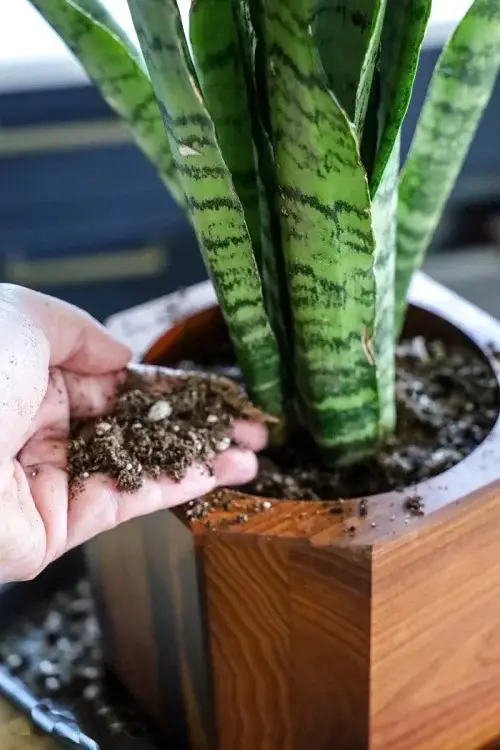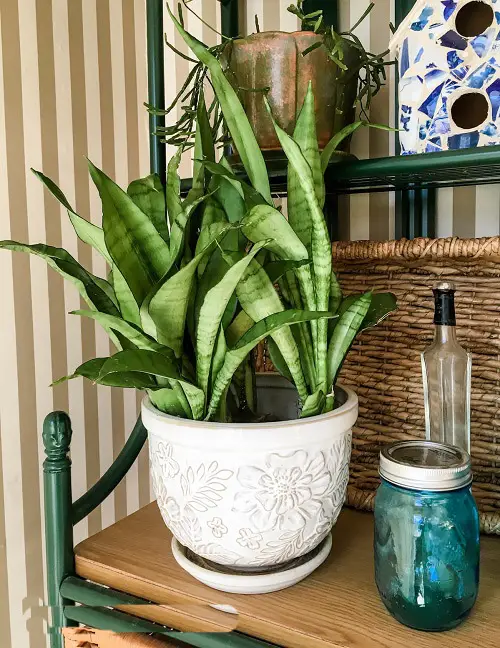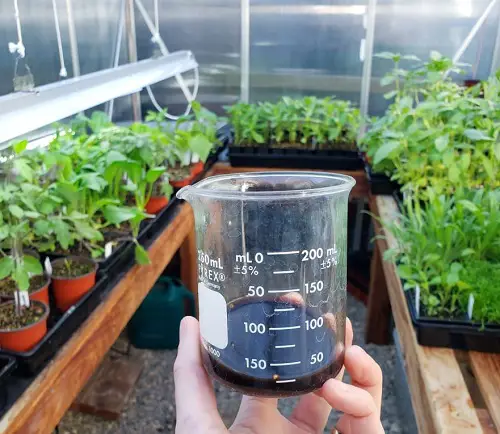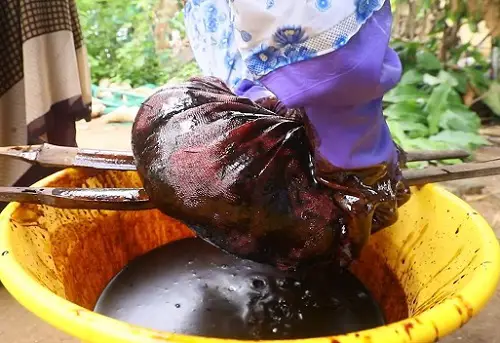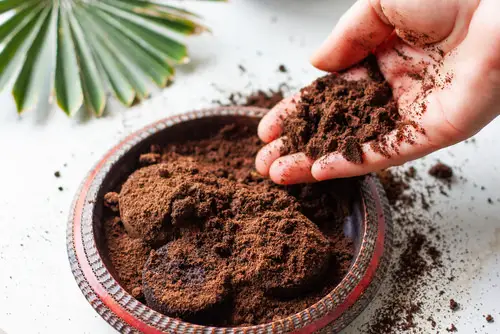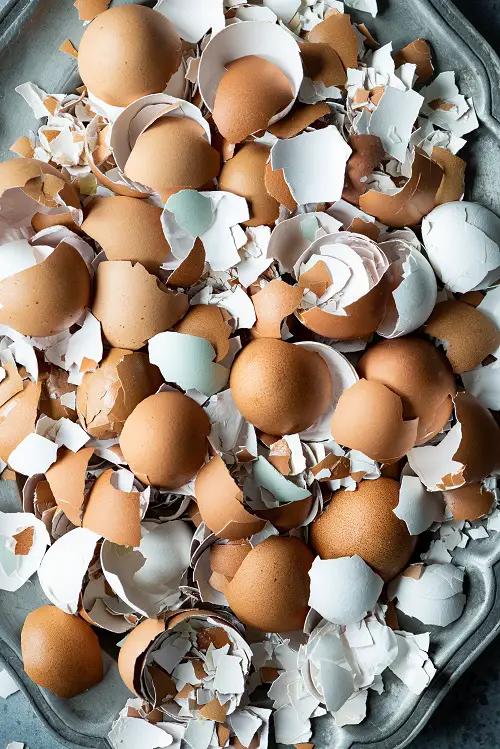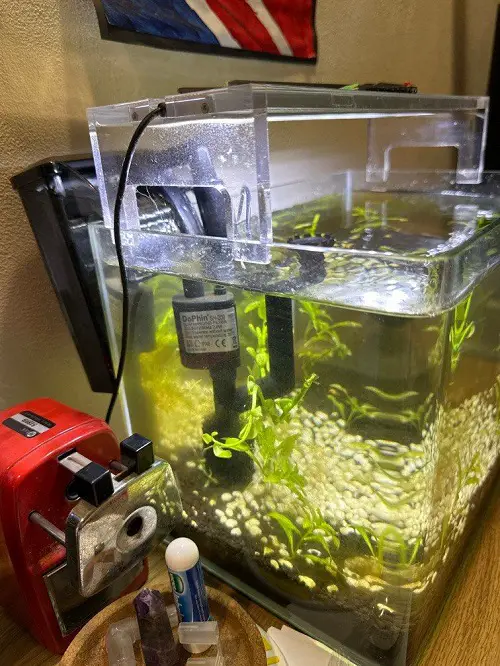Looking for the Best Snake Plant Fertilizers? We have compiled a list of every kind that will help to keep your plants thriving!
Snake plants, or Sansevieria, add character to indoor spaces with their striking appearance. Though easy to care for, choosing the right fertilizer can help them thrive. This guide explores the Best Snake Plant Fertilizers options, providing detailed insights.
Best Snake Plant Fertilizers – Commercial Options
1. Balanced Liquid Houseplant Fertilizer
A versatile liquid fertilizer offering a 10-10-10 ratio of nitrogen, phosphorus, and potassium, ensuring all-round growth and vitality. Ideal for a wide range of indoor plants, including snake plants.
- When to Feed: During the growing season, every 6-8 weeks.
- How Much to Feed: Dilute 1-2 teaspoons per gallon of water.
- Why It Works: Encourages balanced growth in foliage, roots, and blooms.
2. Slow-Release Granular Fertilizer
Formulated as tiny, nutrient-packed granules, this fertilizer offers controlled nutrient release over several months. Perfect for busy gardeners who prefer a set-and-forget approach.
- When to Feed: Once at the start of the growing season.
- How Much to Feed: Apply 1-2 tablespoons per plant.
- Why It Works: Ensures a consistent nutrient supply, avoiding spikes and deficiencies.
3. Succulent Fertilizer
Crafted specifically for succulents, including snake plants, this fertilizer offers an optimized nutrient balance. It supports the unique growth habits and water retention needs of succulents. Some of the best options are – Chultz Cactus Plus Liquid Plant Food, iracle-Gro Succulent Plant Food, Espoma Organic Cactus Plant Food, and ck’s Classic All Purpose Fertilizer.
- When to Feed: Every 4-6 weeks during the growing season.
- How Much to Feed: Follow packaging instructions.
- Why It Works: Tailored to the precise needs of succulents, promoting healthy growth without over-fertilizing.
Best Snake Plant Fertilizers – Non-Commercial Options
4. Compost

Compost, made from decayed organic matter, enriches soil structure and provides a slow release of essential nutrients. It’s a sustainable, environmentally friendly way to nourish plants.
- When to Feed: Incorporate during repotting or as a top dressing in spring.
- How Much to Feed: Mix a 1-2 inch layer with existing soil.
- Why It Works: Enhances soil fertility and moisture retention, promoting healthy root development.
5. Manure
Well-rotted animal manure, such as cow or horse, is packed with natural nutrients. It enhances soil texture and microbial activity, leading to vigorous growth.
- When to Feed: Mix with soil during repotting or as a top dressing in spring.
- How Much to Feed: Mix a 1-2 inch layer with existing soil.
- Why It Works: Provides an organic, nutrient-rich boost to soil, supporting overall plant wellness.
Best Snake Plant Fertilizers – Unconventional Options
6. Seaweed Extract
Derived from seaweed, this liquid extract is rich in vitamins, minerals, and growth hormones. It’s known to stimulate plant growth and improve resistance to stress.
- When to Feed: Once a month during the growing season.
- How Much to Feed: 1 tablespoon per gallon of water.
- Why It Works: Enhances growth, vitality, and resilience against diseases and pests.
7. Fish Emulsion
Made from processed fish by-products, fish emulsion is an organic liquid fertilizer. It’s rich in nitrogen and offers an array of essential nutrients in an easily absorbable form.
- When to Feed: Every 4-6 weeks during the growing season.
- How Much to Feed: Dilute 1-2 tablespoons per gallon of water.
- Why It Works: Boosts leafy growth and overall plant health through readily available nutrients.
8. Coffee Grounds
Used coffee grounds add organic matter and mild acidity to the soil. This unconventional method recycles kitchen waste while enhancing soil quality.
- When to Feed: Every 3-4 months as a top dressing.
- How Much to Feed: Spread a ½ inch layer.
- Why It Works: Improves soil structure, water retention, and provides a gentle nutrient boost.
Which Plants Like and Do Not Like Coffee Grounds
9. Eggshells
Crushed eggshells release calcium, an essential nutrient for strengthening plant cell walls. This resourceful method utilizes kitchen waste to benefit plant health.
- When to Feed: During repotting or as a top dressing.
- How Much to Feed: Use 2-3 crushed eggshells per plant.
- Why It Works: Slowly adds calcium to soil, enhancing cell strength and stability.
10. Banana Peels
Rich in potassium, banana peels can be used to make a liquid fertilizer. This home-based option nourishes snake plants, enhancing their resistance to diseases.
- When to Feed: Every 2 months.
- How Much to Feed: Soak peels in water for 48 hours, then use the liquid to water the plant.
- Why It Works: Provides potassium, which is essential for strong cell walls and overall plant health.
11. Epsom Salt

Epsom salt contains magnesium and sulfur, two essential nutrients that can promote plant growth and green, vibrant leaves.
- When to Feed: Once every 3-4 months.
- How Much to Feed: Mix 1-2 tablespoons in a gallon of water and use it to water the plant.
- Why It Works: Enhances leaf color and can aid in nutrient absorption.
8 Amazing Uses of Epsom Salt for Tomatoes
12. Green Tea
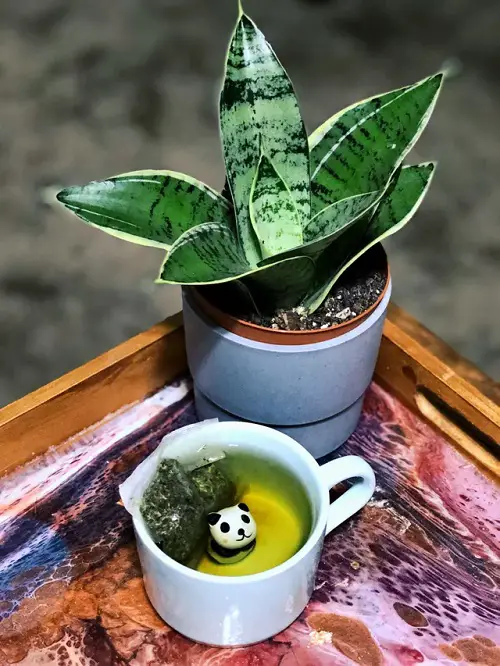
A weak green tea solution can be used to water snake plants. It’s a gentle way to provide additional nutrients and antioxidants.
- When to Feed: Once every 2-3 months.
- How Much to Feed: Brew weak green tea and allow it to cool, then use it to water the plant.
- Why It Works: Offers mild nourishment without the risk of over-fertilizing.
13. Cooking Water

The water left from cooking vegetables contains minerals and nutrients. Allow it to cool, and use it to water your snake plants.
- When to Feed: Occasionally, as available.
- How Much to Feed: Replace regular watering with cooled vegetable cooking water.
- Why It Works: Utilizes nutrients otherwise lost in cooking, offering a mild boost to plant growth.
14. Pine Needle Mulch
Pine needles can be used as mulch around snake plants. They decompose slowly and can add acidity and other nutrients to the soil.
- When to Feed: As a top dressing, once a year.
- How Much to Feed: Use a 1-inch layer around the base of the plant.
- Why It Works: Slowly enriches the soil, improving its structure and nutrient content over time.
15. Aquarium Water
Aquarium water, particularly from freshwater tanks, is often rich in nitrogen and other nutrients due to fish waste and uneaten food. This nutrient-packed water can be used to water snake plants, providing a natural, balanced fertilizer.
- When to Feed: Whenever you change the water in your fish tank, typically every 1-2 weeks.
- How Much to Feed: Use the water directly on your plants, replacing a regular watering session.
- Why It Works: The water from a fish tank contains dissolved nutrients and beneficial bacteria that can enrich the soil, enhancing growth and vitality in the snake plant.
Note: Ensure that the aquarium water is from a freshwater tank and free from chemicals or treatments that might be harmful to plants.
Using Aquarium Water for Plants
16. Foliar Spray

Foliar feeding is the application of nutrients directly to the leaves, allowing the plant to absorb essential elements more quickly than through the soil. Dilute 1/4 teaspoon of balanced, water-soluble fertilizer in one gallon of water.
- When to Feed: Feed during the growing season, usually spring through early fall.
- How Much to Feed: Observe how the plant responds and adjust the frequency and quantity of the spray accordingly. Usually, once a month is enough.
- Why It Works: The nutrients are directly absorbed through the leaves, allowing immediate use by the plant.
Correct Way to Fertilize a Snake Plant: Choosing Your Approach
When it comes to fertilizing your snake plant, the correct method can make all the difference in promoting healthy growth and vitality. There are two widely accepted approaches that cater to different preferences and lifestyles. Here’s a closer look at both:
1. Frequent Fertilizing with Weak Doses
This approach involves fertilizing the snake plant more frequently but using a weaker concentration of the fertilizer.
- Frequency: Every 3-4 weeks.
- Dose: Use half or even a quarter of the recommended dose on the fertilizer package.
- Why It Works: Regular, low-dose feedings provide consistent nourishment without risking over-fertilization. This approach encourages steady growth and may be ideal for those who closely monitor their plants.
2. Less Frequent Fertilizing with Normal Recommended Doses
This method involves waiting longer between fertilizing but using the regular or normal recommended dose.
- Frequency: Every 6-8 weeks or as recommended on the fertilizer package.
- Dose: Use the standard amount as directed by the manufacturer.
- Why It Works: By following the regular guidelines, this approach offers balanced nutrition at intervals that align with the snake plant’s natural growth patterns. It’s an excellent choice for gardeners looking for a more hands-off approach.
Both methods have their benefits, and the right one for you depends on your personal preference and gardening style. Keep in mind that snake plants are generally tolerant and do not require heavy fertilizing, so either method can work well.
Understanding your plant and observing its growth and response to fertilizing will help you tailor the method that suits it best. Whether you prefer to be more involved with frequent, weaker doses or take a more laid-back approach with regular doses, the key is to be consistent and observant, adjusting as needed for the healthiest snake plant.
The frequency of fertilizing also depends on how much sunlight the plant is getting and the growing medium, which needs to be well draining.
The Bottom Line: Fertilizing the plant less is always better than overfeeding it.
Best Snake Plant Fertilizers – FAQs
Q1: How Often Should I Fertilize My Snake Plant?
Generally, fertilizing every 6-8 weeks during the growing season is sufficient. But it varies depending on the type of fertilizer used.
Q2: Can I Over-Fertilize My Snake Plant?
Yes, overfertilizing can lead to salt build-up and root damage. Always follow the recommended guidelines for each specific fertilizer.
Q3: Can I Use Outdoor Plant Fertilizer on My Snake Plant?
While it may be possible, using fertilizers specifically designed for indoor plants, especially succulents, is generally recommended for best results.
Q4: What Signs Show That My Snake Plant Needs Fertilizing?
Slow growth, pale leaves, or lack of vigor might indicate that your snake plant needs fertilizing. However, these symptoms might also point to other issues, so examine the plant’s overall care.
Best Snake Plant Fertilizers – Conclusion
Choosing the right fertilizer for your snake plant can enhance its beauty and resilience. Whether opting for commercial products, organic alternatives, or even unconventional home remedies, understanding the needs of your snake plant is key.



